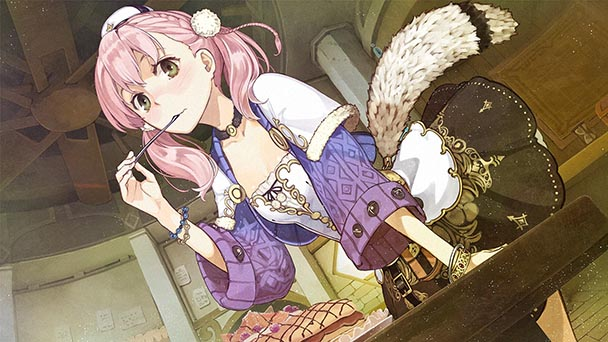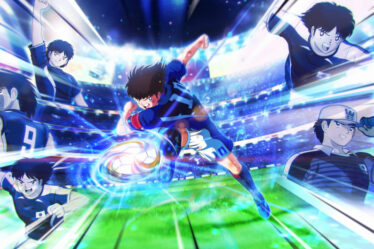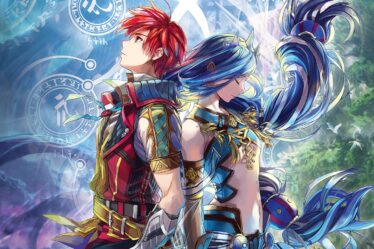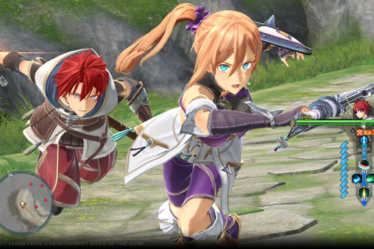
This article was originally published in Italian on GeekGamer.it in 2016.
Tecmo-Koei and Gust solidify their partnership with this Western release of Atelier Escha & Logy Plus: Alchemist of the Dusk Sky, giving players a second chance to step into the shoes of the pair Escha and Logy after their first adventure was released on PS3 in 2014. This “Plus” version adds several improvements and includes all the previously released DLC for the home console edition, unexpectedly offering more than just bland extras: one additional scenario further develops the relationship between the protagonists, who were already featured in an anime adaptation that repeatedly highlighted Gust’s high expectations for the title. But let’s take a step back—what exactly are we talking about?
Escha and Logy are two young characters driven by different motivations, coming from rather distant backgrounds: Escha is a naive alchemist who has always lived in the remote rural village of Colseit, while the platinum-haired Logy hails from the major provincial city that controls and directs the world of alchemy in the region where the two live. Fate brings them together by chance, as it happens at the start of the game, and yet their relationship becomes one of the central elements around which both their personal stories and the stories of those who accompany them in their roles in Colseit’s Research and Development division will develop.
Just like the previous episodes in the series, Atelier’s approach to storytelling doesn’t follow the generic epic formula employed by hundreds of Japanese RPGs. Instead, it seeks to carve out its own identity in a structure that, while featuring fantastic and adventurous elements, creates an intriguing universe through the daily struggles of a small civilization on the brink of collapse. The world of Dusk, in fact, suffers from a gradual decay that takes its toll on both humans and animals. The atmosphere between the ruins the protagonists explore and many of the natural landscapes that form the backdrop to the adventure is undoubtedly one of the strengths of Koei Tecmo’s title. On the other hand, the series’ success has always been based on the charm and likability of its characters, who, while perhaps a bit stereotypical, are all exceptionally well-developed, with fragile yet determined personalities. The humorous skits are abundant, and in this chapter, there’s even a subtle romantic undertone to the relationship between the protagonists. It’s also worth noting the complete abandonment of gratuitous fan service—despite being present in earlier series entries like Rorona and Totori—in favor of a narrative that is light and delicate, yet full of intriguing developments.
The thematic and narrative naivety that permeated the Arland series (including Totori, Rorona, and Meruru) has gradually faded, and today, we can definitely consider Escha & Logy a solid variation on the JRPG theme, supported by a relaxed and enjoyable plot, as well as an excellent cast of elegant and well-defined characters.
As tradition dictates, at the heart of this chapter’s gameplay lies a series of mechanics based on crafting—the creation of items with specific characteristics using ingredients and basic elements gathered or received as rewards for side quests or battles. Once again, players are tasked with completing time-sensitive missions tied to the progression of the main story, as well as secondary tasks, some of which are more significant for achieving a particular ending or for earning the coveted platinum trophy. Fortunately, managing these time-bound mechanics is far less restrictive than in previous episodes, allowing players to manage secondary tasks between the demands of Solle—a stubborn municipal worker in Colseit—and the main mission. Needless to say, these tasks become repetitive after just a couple of hours of gameplay, but since they serve merely as filler and don’t weigh heavily on the time-bound mechanics, they encourage players to do their best in the field, rewarding them with progressively better rewards for completing small objectives.
The crafting system is now more streamlined, with menus that are much more intuitive and user-friendly than those of the past, taking into account the smaller screen of the PS Vita. Logy can disassemble archaeological finds to create new materials and upgrade equipment, while Escha can create and fuse items, following the series’ familiar mechanics. All gameplay mechanics are introduced gradually, and the game gives players the time needed to get accustomed to each new feature, thanks to a solid narrative pace that, although often evolving into lengthy cinematic sequences with somewhat clichéd dialogue, only slows down the action when something new is introduced, catering to newcomers or those unfamiliar with the franchise’s gameplay mechanics.
Exploration and the battle system follow the model established years ago by Atelier Ayesha and reaffirmed in the recent Atelier Shallie. The polygonal environments that make up the various locations are varied, and although they generally have a sparse look, they align with the game’s narrative premise—a world on the edge of ruin, and therefore empty and decaying. However, I still can’t quite understand how useful the ability to jump really is, especially when the level design doesn’t allow for any platforming elements and doesn’t do much to develop the verticality of what’s visible. In any case, it’s clear that Gust added the jumping feature just to show the protagonists’ underwear, and there’s no denying that.
Turn-based battles feature a party of six heroes arranged in two rows of three, who can be switched at any time. Between attacks, a bar on the right side of the screen allows additional attack and defense actions from teammates. This results in a number of choreographed moves supported by a fast-paced, well-structured rhythm. By planning carefully, players can unlock special moves using the same bar, which, if filled each turn by defeating an enemy, allows the release of some of the most devastating techniques seen in the series—visually, at least, if not always from a gameplay perspective. We’re lightyears away from Atelier Rorona, the first PS3 entry in the series, and it’s fascinating to see how the Atelier brand has made huge strides both technically and in terms of game design over the course of just a few years.
As mentioned earlier, the technical aspect has always been one of the series’ weak points, particularly with the PS Vita “Plus” editions. However, Escha & Logy Plus boasts an outstanding character design, consistent with the game’s universe and made even more convincing by polygonal models that perfectly capture the lines and pastel colors. Often, players will find themselves simply mesmerized by the beauty and magnificence of these cel-shaded adventurers, with highly detailed models convincingly animated, especially during sequences that highlight the power of their attacks against enemies and bosses. Unfortunately, the same cannot be said for the secondary characters and environments, both of which are overly sparse, creating a stark contrast between the game’s main characters and the vast polygonal sets they inhabit. Cinematic sequences are now carried out with the movements of polygonal models, whereas in the past, the series used a visual novel-inspired approach, with text boxes and 2D character artwork during conversations. However, the revamped direction of these 3D sequences, along with the limited variety of animations for the protagonists, fails to convince fully, which is a shame given the sumptuous overall art direction. In line with the fantasy atmosphere and the visual aesthetics rooted in Japanese comic influences, the soundtrack is also well-crafted, further enhanced by several vocal tracks—including the eternally stunning voice of Itou Kanako and the beautiful opening theme.
The sound design completes the immersive experience that Atelier Escha & Logy: Alchemist of the Dusk Sky offers to those who prefer to experience video games as an artistic medium. As always, kudos to Tecmo-Koei for reintroducing the option to play with Japanese voice acting after this feature was suddenly removed in the previous installment, Ayesha—when player feedback is considered, it always pays off.
Atelier Escha & Logy Plus: Alchemist of the Dusk Sky is the best entry in the Atelier series to date, despite the technical limitations of the PS Vita edition. If you’re looking for an adventure with lighthearted tones and well-established yet calm mechanics, you’ll find in the world of Dusk and in Colseit’s everyday life a pleasant escape from modern life, as well as an opportunity to experience one of the most successful artistic directions in any Atelier episode. The extras in the Plus version make it worth purchasing, even if you already own the PS3 edition.


